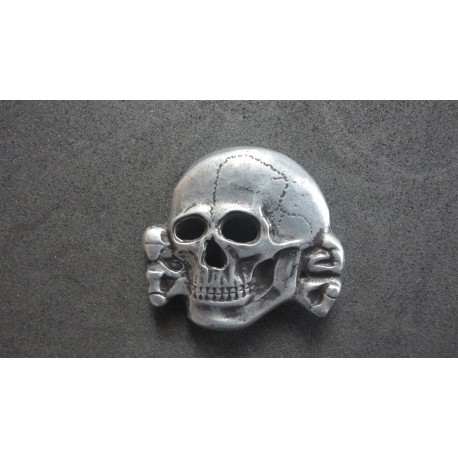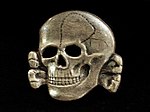No products
Best sellers
-

WW2 - SS Officer Visor Cap Skull with Eagle - Metal
Recommended by us due to the High Quality and detail of this product....
£ 19.99 -

WW2 - SS Officer Visor Cap Skull - Superior
Recommended by us due to the High Quality and detail of this product....
£ 11.99 -

WW2 The Knights Cross of the Iron Cross - in Gold
Recommended by us due to the High Quality and detail of this product....
£ 24.99 -

WW2 Iron Cross with Oak Leaves and Swords,included Ribbon - SUPERIOR
Recommended by us due to the High Quality and detail of this product....
£ 19.99 -

WW2 N.S.D.A.P - Golden Party Badge
Full size type,numbered and marked to The Golden Party Badge....
£ 17.99 -

WW2 - Luftwaffe Officer Visor Cap Eagle
Recommended by us due to the High Quality and detail of this product....
£ 12.99 -

WW2 - SS Officer Visor Cap Eagle - Superior
Recommended by us due to the High Quality and detail of this product....
£ 11.99 -

WW2 German U-Boat War Badge - in Silver
Recommended by us due to the High Quality and detail of this product....
£ 13.99 -

WW2 - SS Skull Badge - ( Mine Honor is True Jewelry )
Recommended by us due to the High Quality and detail of this product....
£ 12.99 -

WW2 The Knights Cross of the Iron Cross - in Silver
Recommended by us due to the High Quality and detail of this product....
£ 24.99
ww2 German Cap Insignia - Metal
No manufacturer
-

WW2 - Officer Visor Cap - Wool Insignia
£ 5.99 £ 8.99
No supplier
Viewed products
-

WW2 - SS Officer Visor...
Recommended by us due to the High...
-

WW2 - SS Officer Visor...
Recommended by us due to the High...
WW2 - SS Officer Visor Cap Skull - Superior
New product
Recommended by us due to the High Quality and detail of this product.
Will not be disappointed with the quality of item.
----Looks Like Orginal----
Stamped like the orginals,markings on reverse.
3 Items
Warning: Last items in stock!
More info
Uniform design and function
While a multitude of uniforms existed for the SS, often depending on the theatre of war where they were stationed, the all black SS uniform is the most well known. Black was seen as sombre and authoritative. The black-white-red color scheme was characteristic of the German Empire, and was later adopted by the Nazi Party. Further, black was popular with fascist movements: a black uniform was introduced by the blackshirts in Italy before the creation of the SS. There was a traditional reason, as well. Just as the Prussian kings' and emperors' life-guard cavalry (Leibhusaren) had worn black uniforms with skull-and-crossbones badges, so would the Führer 's bodyguard unit.As with many more formal military uniforms, these SS uniforms were tailored to project authority, and foster fear and respect. As Himmler put it, "I know there are many people who fall ill when they see this black uniform; we understand that and don't expect that we will be loved by many people."
During the war, the German clothing factory that eventually became the international menswear powerhouse Hugo Bossproduced thousands of SS and other uniforms with the black SS uniform having been designed by Karl Diebitsch and Walter Heck.
Once the war began, however, the black uniform was seldom worn. The combat units of the SS-Verfügungstruppe (SS-VT)and the later Waffen-SS wore a variation of the field-grey (grey-green) (feldgrau) army (Heer) uniform with SS insignia. The majority of SS personnel wore variations of the Waffen-SS uniform or the grey-green SS service tunic. Branches with personnel that normally would wear civilian attire in the Reich (such as the Gestapo and Kripo) were issued grey-green SS uniforms in occupied territory to avoid being mistaken for civilians.
SS uniforms used a variety of insignia, the most standard of which were collar patches to denote rank and shoulder boards to denote rank and position, along with sleeve cuffbands and "sleeve diamond" patches to indicate membership in specific branches of the SS. However, most of these uniforms fell apart as they were often made out of weaker material than normal cotton. They were highly flammable and would usually burn off of their wearer after shot. They were later discontinued because of this flaw in their design.

Reviews
No customer reviews for the moment.






